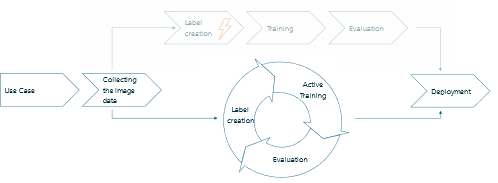Search
ICNAP is a collaborative center where we come together to address and solve the challenges of digitalization
66
Projects
15
Services
49
Files
7
Topic Fields
70
Scientific Contributors
4
Institutes
To fully leverage the benefits of our resources, we invite you to become a member of our community. Membership provides you with exclusive access to all project results, allowing you to delve deeper into the world of ICNAP.

A project in computer vision research is developing an architecture that incorporates active and semi-supervised learning to train deep learning systems more efficiently. The goal is to minimize the amount of training data needed, accelerate learning, and enable early assessment of a model's ability to meet specific use case requirements. Active learning involves selecting the most informative data for training, while semi-supervised learning leverages both labeled and unlabeled data to enhance model performance.
| Topic Fields | |
| Published | 2023 |
| Involved Institutes | |
| Project Type | ICNAP Research/Transfer Project |
| Responsibles |
Contact us to get in touch! With a membership, you’ll gain full access to all project information and updates.
The growing importance of deep learning in the field of computer vision is undeniable and has the potential to change the way we approach image and video analysis. A project focusing on efficient and interactive training of deep learning systems is an important step in this direction. The development of an architecture and training process that utilizes the principles of active and semi-supervised learning allows for purposeful selection of training data and early exploitation of knowledge gains in the training process. With the long-term goal of estimating whether a model will be able to fulfill requirements defined by the use case early in the training process, this method could be a significant breakthrough in computer vision research. The application of active and semi-supervised learning is a promising approach to reduce the required amount of training data and improve the learning speed of deep learning systems. Active learning selectively chooses training data by asking the model which data is most informative to achieve the greatest learning gain. Semi-supervised learning utilizes labeled and unlabeled data to improve the model. The model is encouraged to recognize and generalize patterns in the unlabeled data to make better predictions. Overall, this project is a promising step towards more efficient and interactive training of deep learning systems in computer vision research.
© Fraunhofer 2025